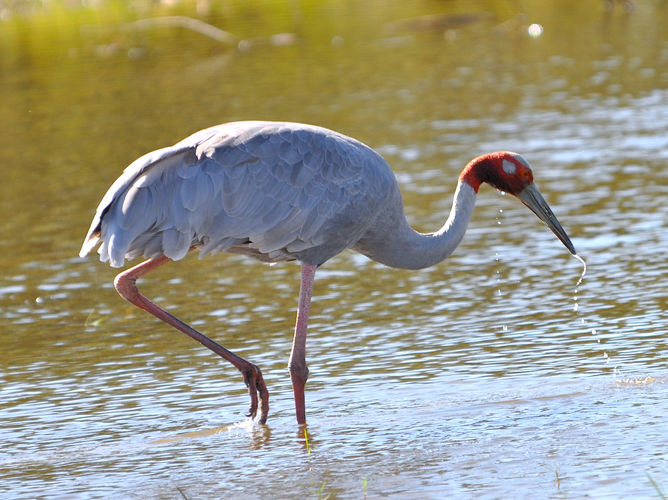
Crane Project
Annual Crane Count
The Crane count has been running annually since 1997 to monitor the population of Sarus Cranes (Antigone antigone gillae) who migrate from the Gulf of Carpentaria and Cape York to winter on the Atherton Tablelands. The Atherton Tablelands were designated as a Key Biodiversity Area (KBA) in 2009, part of a global network of protected areas. The cranes are a key species within the KBA. Organised with the support of Birdlife North Queensland and a great team of volunteers.
Held on a weekend in September each year, the day is separated into two parts. The first part is driven transects on predefined routes between 12:00 and 2:00 pm looking for Cranes (both Sarus and Brolga) foraging in flocks. We count both species and try to identify the crop they are feeding on. The second part is a count as the cranes come into roost. This is carried out at multiple roosting areas across the Tablelands starting 2 hours prior to dusk and carrying on till dark. We like to round off the day with a bite to eat and a tally of the count at a local restaurant or pub, followed by a talk from a guest speaker.


Reports
Each year a report is produced to share the current roost count and day transect data, as well as provide some analysis and context for researchers, land managers, and other stakeholders. We sincerely thank all volunteers for their participation. Without you this two-decade study would not be possible.
Publications
Numbers, distribution and behaviour of Australian Sarus Cranes Antigone antigone gillae and Brolgas A. rubicunda at wintering roosts on the Atherton Tablelands, far north Queensland, Australia
Abstract: The Atherton Tablelands in far north Queensland is the only currently known concentrated flocking area for Australian Sarus Cranes Antigone antigone gillae. Brolgas A. rubicunda also flock there in the non-breeding season, offering a unique opportunity to survey numbers, distribution and roost-sites for both species and their interactions. We searched for dry-season roosts every year from 1997 to 2017, and conducted an annual volunteer count simultaneously at multiple sites from late afternoon to dark as cranes flew in to roost. From one to several thousand cranes winter annually on the Tablelands, with Sarus Cranes highly concentrated in the Atherton Tablelands Key Biodiversity Area (KBA) and Brolgas concentrated to the north-west and south-west of the KBA. No population trends were detected in the context of 21 years of highly variable annual counts, a substantial proportion of birds not identified to species in failing light, and a change in monthly timing of the annual count. Notwithstanding these caveats, we provide the first systematic minimum estimate of 826–3255 Australian Sarus Cranes wintering on the Tablelands, up to 19.5% of the global population. The corresponding estimate for Brolgas is up to 3469 individuals or 4.9% of the global population. These are likely to be underestimates, particularly for Sarus Cranes, which arrived at roosts on average much later than Brolgas, so were more likely to be unidentified. The species shared many roosts and, except at one large shared roost, family groups of the two species intermingled rather than occupying separate parts of the site, an uncommon relationship at mixed-species wintering crane roosts. Further study of these behavioural findings could extend understanding of sympatry in these closely related species. Conducting counts in a consistent month may improve trend detection within the limits imposed by strong fluctuations in annual numbers.
Volunteers needed
Each year we need volunteers to help us count! It’s always a fun day out and a great chance to meet other birders and spend some time watching a truly amazing species. No experience necessary and we always welcome new counters but we do encourage previous counters to get in touch as their experience is vital and greatly appreciated.












